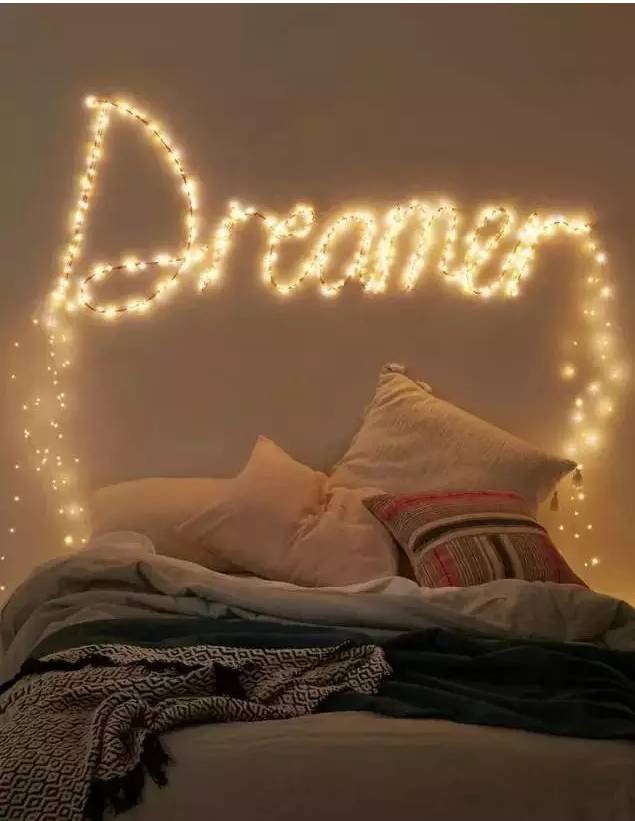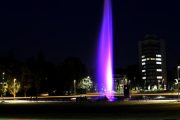1. Surface Light Performance
Surface light refers to the luminous surface made of indoor ceiling, wall and ground.
The ceiling light is characterized by uniform light, sufficient light, and various manifestations. If fluorescent ceilings are used, the light density must be consistent to ensure sufficient light in each space. Another example is the use of large-area downlights on the ceiling. There are regular small downlights on the ceiling, as if the night sky is dotted with stars. Another example is the combination of the ceiling beam frame structure, which is designed into light wells, and the light is emitted from the well grid to produce a unique spatial effect.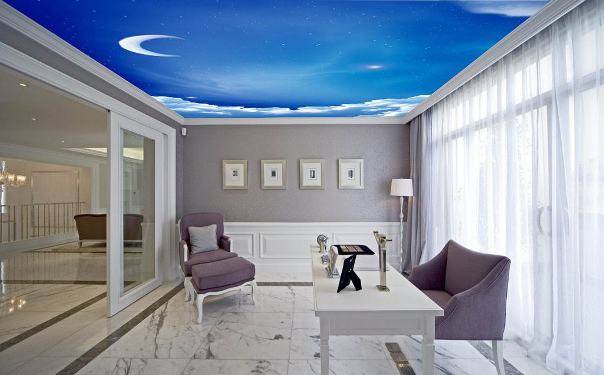
Wall lights are generally used for photo exhibitions. The wall is made into a hollow double-layer sandwich wall, and the wall facing the exhibition side is made into a luminous wall, in which a number of glass frames are embedded, and a light projection device is set behind the frame to form a luminous exhibition wall. Large light box advertisements also belong to this type of lighting.
The ground light is to make the ground into a luminous floor, usually set up for the dance floor. The colorful luminous floor, its light, shadow and color change synchronously with the rhythm of the electronic sound, which greatly enhances the artistic atmosphere of the stage performance.
2. Strip light performance
The so-called strip light is to arrange the light source into a long strip of light.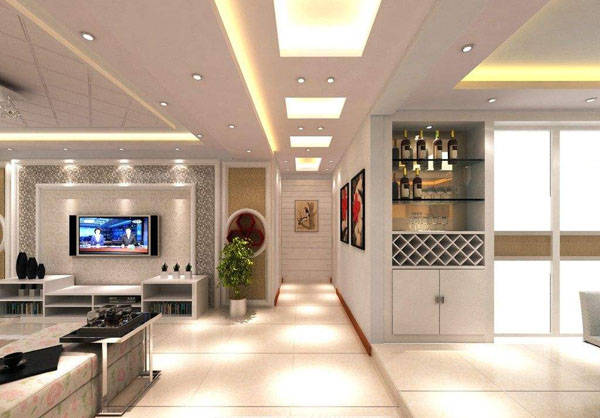
There are various forms of expression, including square, grid, bar, bar grid, ring (circle, ellipse), triangle and other polygons. Such as peripheral flat light tape ceiling, peripheral recessed light tape ceiling, inner frame type light tape ceiling, inner frame recessed light tape ceiling, peripheral light tape floor, inner frame light tape floor, ring light tape floor, upper Projection light trough, ceiling recessed light trough and foot recessed light trough, etc.
The long strip of light has a certain degree of guidance, and is often used as a guide lighting in the environmental design of public places with a lot of people. Other geometric light strips are generally used for decoration.
3. Point light performance
Point light refers to a light source with a small and concentrated light projection range. Because of its strong light and illuminance, it is mostly used for direct or accent lighting in restaurants, bedrooms, study rooms, showcases, stages and other places. Point light has various expression methods, including top light, bottom light, forward light, back light, side light, etc.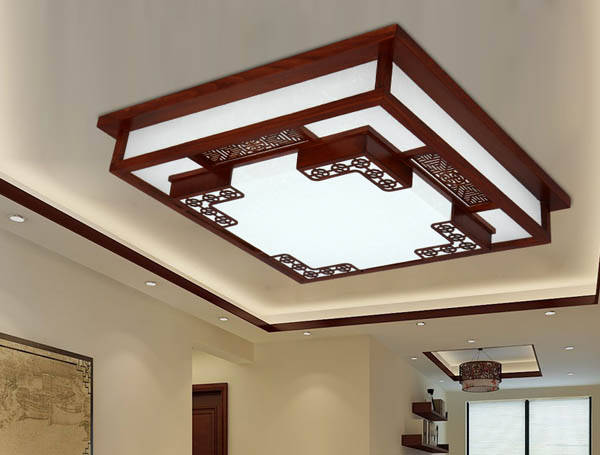
Top light refers to top-down lighting, similar to direct sunlight at noon in summer. The projection of the illuminated object is small, and the contrast between light and dark is strong. It is not suitable for modeling light.
Bottom light-bottom-up lighting, suitable for auxiliary light distribution.
Forward light refers to the lighting from the front, the projection is flat, the color of the illuminated object appears completely, but the three-dimensional feeling is poor.
Backlight-the lighting from the rear, the outer contour of the illuminated object is clear, with the silhouette effect of artistic charm. It is a commonly used light distribution method in photography art and stage canopy.
Side light refers to the direction of light from left and right, upper left, upper right, lower left, and lower right. The projection of the illuminated objects is clear, the three-dimensional sense is strong, and the layers are rich. It is the most acceptable way of light for people.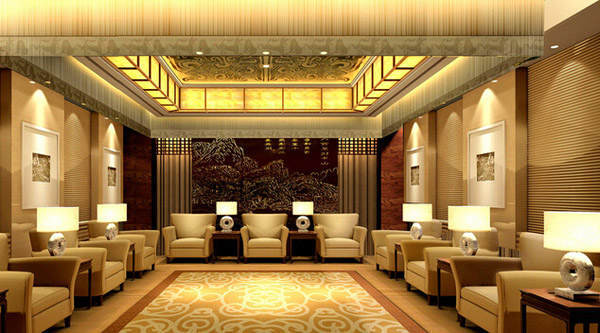
4. Static light and flowing light
Static light:
The lamp is fixed, the illumination is still, and the light that does not flicker is a static light. Most indoor lighting uses static lights. This lighting method can make full use of light energy and create a stable, soft and harmonious light environment atmosphere. Suitable for schools, factories, office buildings, shopping malls, exhibitions and other places.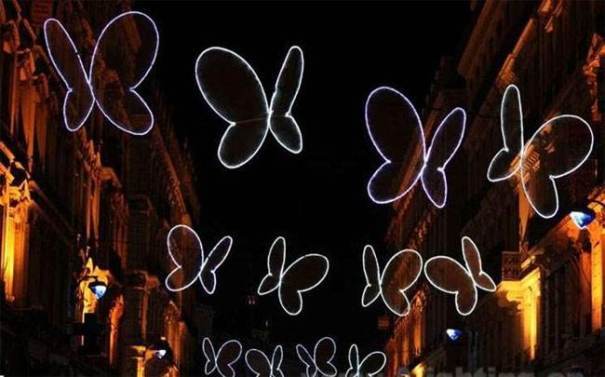
Flowing lights–
It is a flowing lighting method. It has rich artistic expression and is a commonly used method in stage lighting and urban neon advertising design. Such as the use of chasing lights on the stage, constantly chasing moving actors. Another example is the continuous flow and flashing of neon lights used for advertising lighting, changing colors frequently. It not only highlights the artistic image, but also renders the artistic atmosphere of the environment.
5. Laser
A beam of light emitted by a laser. The medium that generates the laser beam includes crystals, glass, gases (such as argon, krypton, helium-neon mixtures, etc.) and dye solutions.
Certain gas lasers have been used as light sources in the art of lighting design. Among them, helium-neon laser is the most commonly used one, which produces red monochromatic light. The argon ion laser produces blue-green light and green light. The two wavelengths of light can be separated by a diffraction grating to form two monochromatic lights of different colors.
Different dye lasers can produce any kind of laser with a wavelength range of 400-750mm as required. However, dye lasers are devices that work in a pulsed manner, and they must rely on their lasers or electronic flash lamps as driving sources.
Bedroom lighting design principles
Lighting can change the atmosphere and personal feeling of the room. For the bedroom, in addition to providing a soft light source that is easy to sleep, it is more important to use the lighting arrangement to relieve the stress of work and life during the day. So, how should bedroom lighting be designed?
Color temperature
Regarding lighting, the first thing to understand is the color temperature of the light. The main indicators of light used daily are color temperature and wattage. Wattage is the intensity of light, and color temperature is the scale of the light color of the light source, in K (Kelvin). The higher the K value, the whiter the light and the closer to natural light.
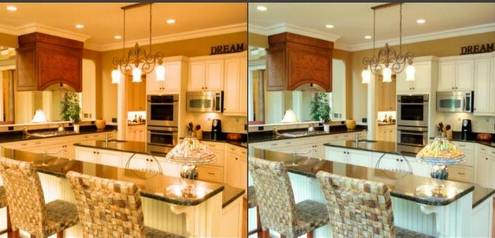
The above is a comparison chart of cold and warm light.
The lighting in the bedroom requires warmth and privacy to achieve emotional relaxation before going to bed, so naturally a warm light source is better. Especially low-wattage table lamps similar to candlelight sources are the most suitable.
Does the bedroom need a main light?
Why do you say that you can try not to turn on the main light? Because when the big white main light is turned on, the whole room will be under a flat surface. If it is a combination of different lamps and colors of floor lamps, main lamps and wall lamps, different levels of space can be combined in a small space. Both functions and vision will be very rich.
Some friends installed the main lamp while installing the wall lamp and floor lamp. Good habits are not cultivated. As soon as he arrived in the bedroom, he turned on the main light, and the whole room was shrouded in the invincible white glow of the main light. Over time, wall lamps and floor lamps have become decorations, which are only used when friends visit or take selfies.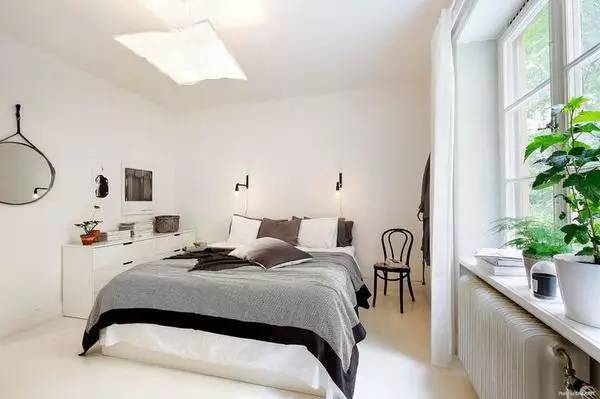
In fact, whether to install the main light or not is mainly a question of concept and consciousness. Many friends still consider the point of “brightness”. Most families are not good at installing main lights. It may be because they already have a more mature aesthetic, and are not satisfied with lighting up the room, and start to pursue light and shadow effects. The light from table lamps and wall lamps gives the space a better light and dark level. It can illuminate the room as a bright ceiling light, which is more suitable for offices and workshops.
Bedroom lighting type
The general lighting of the bedroom can be divided into three types: general lighting, local lighting and decorative lighting. The general lighting in the bedroom is for resting in the living room. When designing, pay attention to avoid excessive light or whitish, because this kind of light tends to make the room look dull and lifeless. It is best to choose lamps with warm colors, which will make the bedroom feel more cozy. Be careful not to install a dual-control switch, otherwise it will be uncomfortable to get up and turn off the lights in the cold winter. 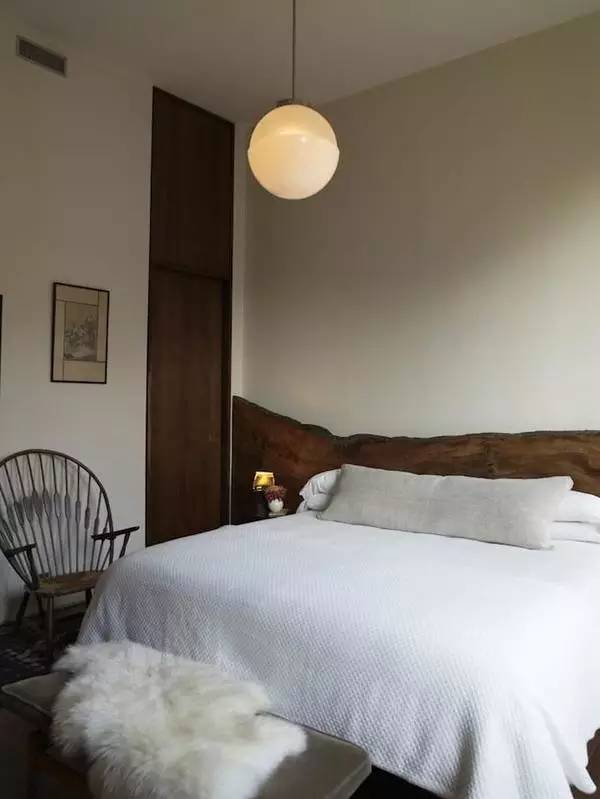
Local combined lighting is mainly used for dressing, reading, changing clothes collection, etc. For example, set up a bedside lamp next to the bed to facilitate reading. Reading lighting should be properly arranged, because too strong or insufficient lighting will directly affect vision and cause damage to the eyes.
The local lighting of the dressing table can facilitate makeup. Many friends will place a light above the mirror, but this is actually easy to produce shadows. Installing lights on both sides of the vanity mirror is the most sensible way. But the light should not be too white or too strong, but as close as possible to natural light.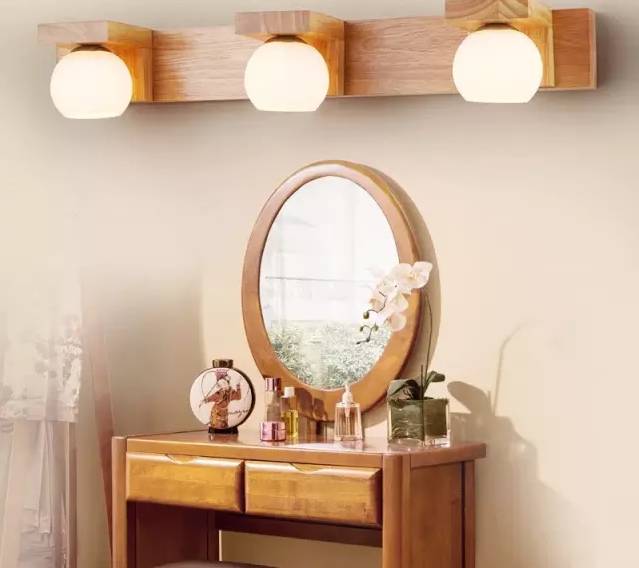
The local lighting of the wardrobe is mainly aimed at the kind of wardrobe that is “indomitable” at the same time. Mostly install a controllable light source on the top of the cabinet. When looking for clothes, your body is turned away from other light sources. Only the light on the top of the cabinet will not let yourself be blinded.
Decorative lighting is mainly to create the space atmosphere of the bedroom, such as romance and warmth. The clever use of floor lamps, wall lamps and even small chandeliers can better create the atmosphere of the bedroom.